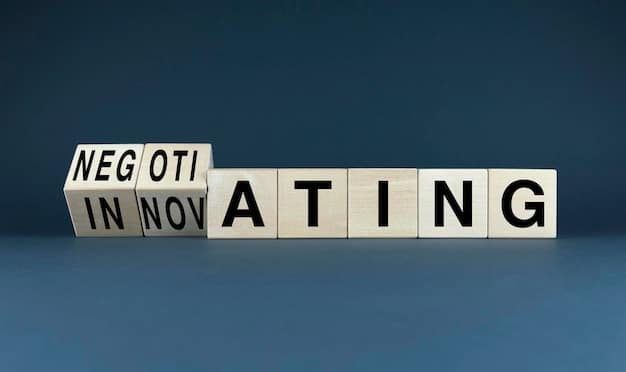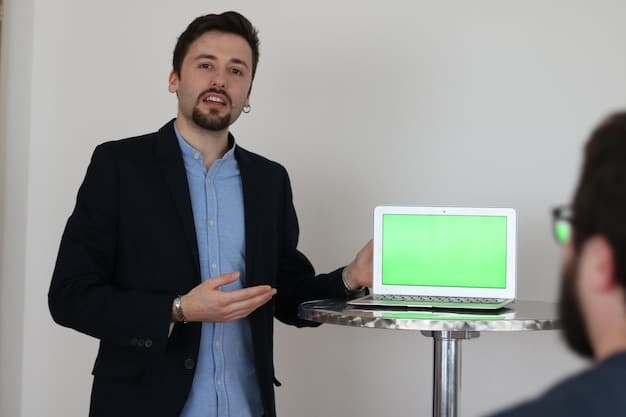Is Your Sales Process Leaking Money? Fix These Bottlenecks to Boost Sales by 12%

Is Your Sales Process Leaking Money? This article identifies five common sales cycle bottlenecks—lead qualification, demonstration effectiveness, handling objections, urgency creation, and closing techniques—offering actionable strategies to fix them and potentially improve close rates by 12%.
Are you concerned that your company’s sales process might be underperforming? Are leads slipping through the cracks, and are close rates lower than they should be? If so, it’s crucial to identify and address potential bottlenecks in your sales cycle. Find out how to determine is Your Sales Process Leaking Money? Identify and Fix These 5 Common Sales Cycle Bottlenecks to Improve Close Rates by 12%
Identifying the Silent Profit Killer: Sales Process Bottlenecks
Every business strives for a streamlined sales process, but inefficiencies often lurk beneath the surface, quietly draining potential profits. These "leaks" can manifest as delays, lost leads, or stalled deals, ultimately impacting the bottom line. Understanding where these bottlenecks occur is the first step toward plugging the holes and maximizing revenue.
What is a Sales Process Bottleneck?
A sales process bottleneck is a stage in the sales cycle where progress slows down or stops completely. These bottlenecks can be caused by a variety of factors, including ineffective strategies, lack of resources, or poor communication. Identifying and addressing these bottlenecks is vital for improving efficiency and increasing revenue.
These are the kind of question that should be asked during your checkup:
- Is there a stage where deals consistently stall?
- Are leads getting lost or forgotten?
- Are sales reps spending too much time on unproductive activities?
By honestly answering these questions and gathering data, you can pinpoint the areas in your sales process that need attention to get back on track.

Bottleneck 1: Ineffective Lead Qualification
One of the most common profit-draining issues is ineffective lead qualification. Wasting time on leads that are not a good fit for your product or service not only diverts resources but also lowers morale and reduces the overall efficiency of your sales team.
Defining Ideal Customer Profiles
Prioritize leads that align with your ideal customer profile (ICP). An ICP outlines the characteristics of customers who are most likely to find value in your offerings and generate revenue for the company.
Ask the following questions to refine your ideal customer profile:
- What are the key demographics and firmographics of your best customers?
- What pain points does your product or service solve for them?
- What is their budget and decision-making process?
By meticulously defining your ICP, you ensure that your sales efforts are focused on the most promising prospects.
Effective lead qualification is not just about finding potential customers; it’s about finding the right customers. A well-defined ICP serves as a guide, helping you prioritize leads that are most likely to convert into long-term, profitable clients.
Bottleneck 2: Uncompelling Product Demonstrations
A poorly delivered product demonstration can be a deal-breaker. If you’re not effectively showcasing the value and benefits of your product or service, you risk losing the prospect’s interest and ultimately the sale. The key here is to ensure that demonstrations provide clear and immediate value for the prospect.
Tailoring Demos to Specific Needs
Generic demonstrations often fall flat because they don’t address the specific needs and pain points of the prospect. A successful demo should be tailored to show how your product or service solves the prospect’s unique challenges.
Tailor your product demos by following these steps:
- Prepare a compelling intro and conclusion.
- Be ready to quickly explain the value and outcomes you provide.
- Ask them for insight into their needs and challenges.
The goal is to demonstrate to the prospect that you understand their needs and that your product or service is the best solution. Don’t forget to reinforce the value you bring to the table.

Bottleneck 3: Poor Handling of Objections
Objections are a natural part of the sales process, but they can quickly derail a deal if not handled effectively. View objections as opportunities to clarify value, address concerns, and build trust; don’t be afraid of them.
Anticipating Common Objections
Prepare for common objections by creating a list of potential concerns and developing concise, persuasive responses. This preparation allows your sales team to handle objections confidently and professionally.
Take these points into consideration when creating your list of potential concerns:
- Price: Prepare to justify the cost by highlighting the long-term value and ROI.
- Lack of Need: Reiterate their pain points and demonstrate how your solution addresses them.
- Competition: Emphasize your unique differentiators and competitive advantages.
By anticipating and preparing for common objections, you transform potential roadblocks into opportunities to strengthen the prospect’s confidence in your solution. Don’t let a simple objection get in your way!
Bottleneck 4: Failure to Create Urgency
Many deals stagnate simply because there is no compelling reason for the prospect to act now. Creating a sense of urgency is crucial for moving deals forward and closing them in a timely manner. Without urgency, deals can languish, and prospects can postpone their decision indefinitely, potentially leading to lost sales.
Limited-Time Offers and Incentives
One of the most effective strategies for creating urgency is to offer limited-time opportunities or incentives. This encourages prospects to make a decision sooner rather than later.
Here are some examples of incentives you can use:
- Offer a discount or special pricing for a limited time.
- Provide exclusive bonuses or add-ons for immediate purchase.
- Highlight upcoming price increases or changes to the product.
Urgency can be a powerful tool if it helps speed up the decision-making process. Be careful not to create artificial pressure, or you can lose potential customers.
Bottleneck 5: Weak Closing Techniques
Despite a solid sales process, deals often fall apart at the finish line due to weak closing techniques. If your sales team is not equipped with the right skills and strategies to close effectively, you’re leaving money on the table.
Mastering the Art of the Close
Effective closing techniques involve asking the right questions, summarizing the benefits, and confidently guiding the prospect toward a decision. Mastering these techniques can dramatically improve your close rates.
Here are a few techniques that you can use to close:
- The Assumptive Close: Act as if the prospect has already agreed to the sale.
- The Summary Close: Review the benefits of your product and ask for the sale.
- The Urgency Close: Remind the prospect of any time-sensitive offers or deadlines.
Effective closing techniques can drastically improve success rates if implemented correctly. Training and mentoring are a must to ensure a proper execution.
| Key Point | Brief Description |
|---|---|
| 🎯 Lead Qualification | Target ICP leads to maximize conversion potential and reduce wasted efforts. |
| 🚀 Product Demos | Personalize demos to address specific prospect pain points and needs effectively. |
| 🛡️ Objection Handling | Prepare for common objections; see them as opportunities to build trust. |
| ⏰ Urgency | Incentivize prompt decisions through well-timed, limited-time offers. |
Frequently Asked Questions
▼
A sales bottleneck is a stage in the sales process that slows down or stops the progression of deals. It can be identified by tracking metrics like conversion rates at each stage and gathering feedback from the sales team about common roadblocks.
▼
Lead qualification ensures that your sales team focuses on prospects who are most likely to convert, saving time and resources. It improves efficiency and increases the chances of closing deals with the right customers, leading to higher ROI.
▼
Personalized demos address the unique needs and pain points of each prospect, making the product’s value more tangible and relevant. This targeted approach increases engagement and confidence, ultimately improving the likelihood of a sale.
▼
Effective objection handling starts with anticipation. Prepare thoughtful responses to common concerns about price, value, or competition. Empathy and clear communication turn objections into opportunities to build trust and highlight the product’s benefits.
▼
Creating urgency motivates prospects to make quicker decisions by highlighting time-sensitive offers or potential losses from delaying. It prevents deals from stalling, helping you accelerate the sales cycle and achieve better close rates.
Conclusion
Identifying and addressing bottlenecks in your sales process is key to unlocking revenue potential. By optimizing lead qualification, enhancing product demonstrations, mastering objection handling, creating urgency, and refining closing techniques, you can streamline your sales cycle and significantly improve close rates. Don’t let silent profit killers hold your sales back; take action today to plug those leaks!





